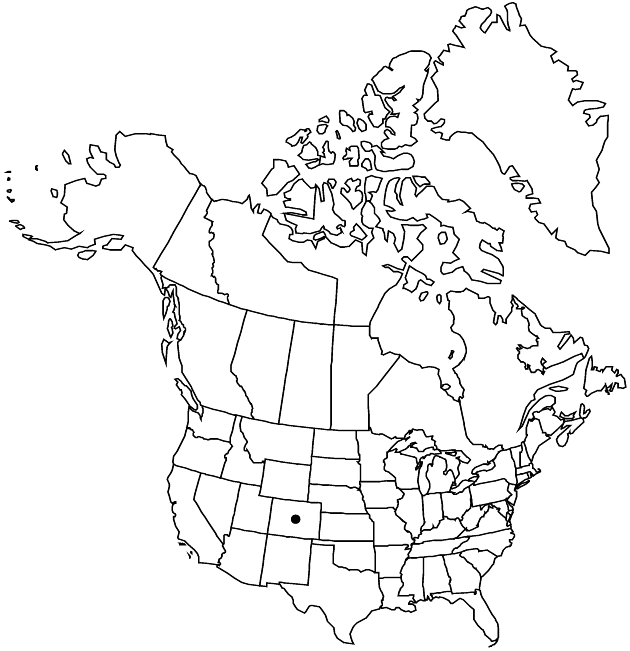Cirsium perplexans
Beih. Bot. Centralbl. 35(2): 441. 1917.
Biennials, slender, 20–100 cm; taprooted. Stems usually 1, erect, thinly arachnoid-tomentose, sparsely pilose distally with short, jointed trichomes; branches few to many, often arising from proximal nodes, ascending. Leaves: blades oblong to elliptic, 15–30 × 2–6 cm, often unlobed and merely spinulose or spiny-dentate, sometimes pinnatifid ca. halfway to midveins, lobes separated by broad sinuses, undivided to coarsely few-dentate, main spines slender, 2–5(–10) mm, abaxial faces ± persistently thinly gray-tomentose, adaxial green, glabrous to thinly tomentose, sometimes sparsely pilose on midveins; basal sometimes present at flowering, sessile or short winged-petiolate; principal cauline sessile, progressively reduced, becoming bractlike distally, mid and distal bases broadly clasping; distal reduced to linear or lanceolate bracts. Heads few–many, in ± openly branched corymbiform or paniculiform arrays; not closely subtended by clustered leafy bracts. Peduncles (0–)3–20 cm. Involucres hemispheric to subspheric, 1.3–2.5 × (1–)1.5–2.5 cm, glabrous to loosely floccose. Phyllaries in 5–8(–10) series, strongly imbricate, green with darker green to brown subapical patch, broadly ovate or oblong (outer) to lanceolate (inner), abaxial faces with prominent to obscure glutinous ridge; outer and middle appressed, spines or terminal appendages spreading to reflexed, bodies entire or with expanded, ± scarious, ± pectinately fringed terminal appendages, tips merely mucronate or with weak spines spreading to reflexed, 1–3 mm; apices of inner often flexuous, flat, scarious, serrulate to expanded and pectinately fringed. Corollas lavender to reddish purple, (16–)19–22 mm, tubes 6–9 mm, throats 5–8 mm, lobes 5–7 mm, style tips 5–6 mm. Cypselae dark brown, 4–5 mm, apical collars stramineous or not differently colored, very narrow; pappi 15–17 mm.
Phenology: Flowering spring–summer (May–Aug).
Habitat: Barren shale hillsides, gypsiferous clay soils, open, nearly unvegetated sites in areas of pinyon-juniper woodlands, sagebrush scrub, saltbush scrub, or Gambel oak brush, roadsides
Elevation: 1800–2100 m
Distribution

Colo.
Discussion
Cirsium perplexans occurs in a few scattered sites at relatively low elevations in the Rocky Mountains of west-central Colorado. In view of this restricted distribution, the common name used by governmental agencies, Rocky Mountain thistle, is misleading; one would expect a species so named to be widely distributed in the Rocky Mountains. The name Adobe Hills thistle is descriptive of the habitat.
Selected References
None.